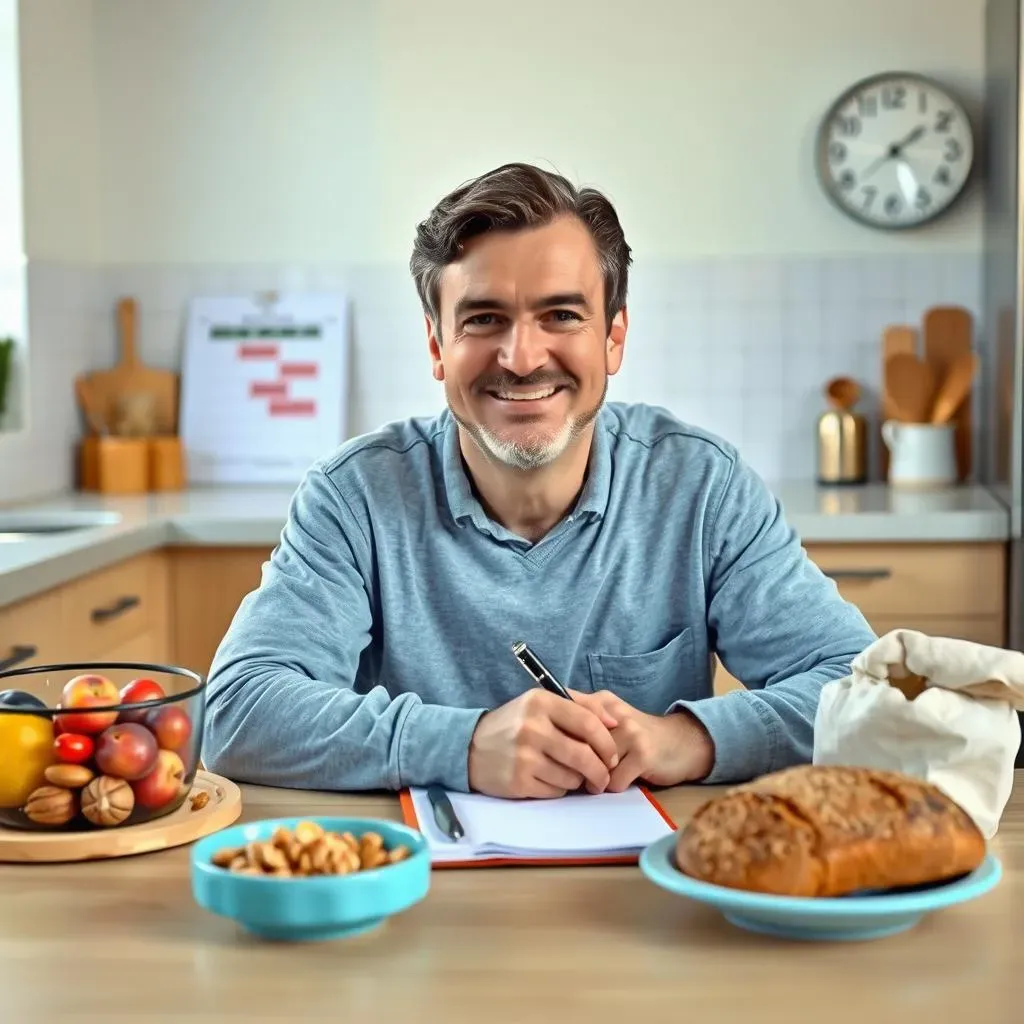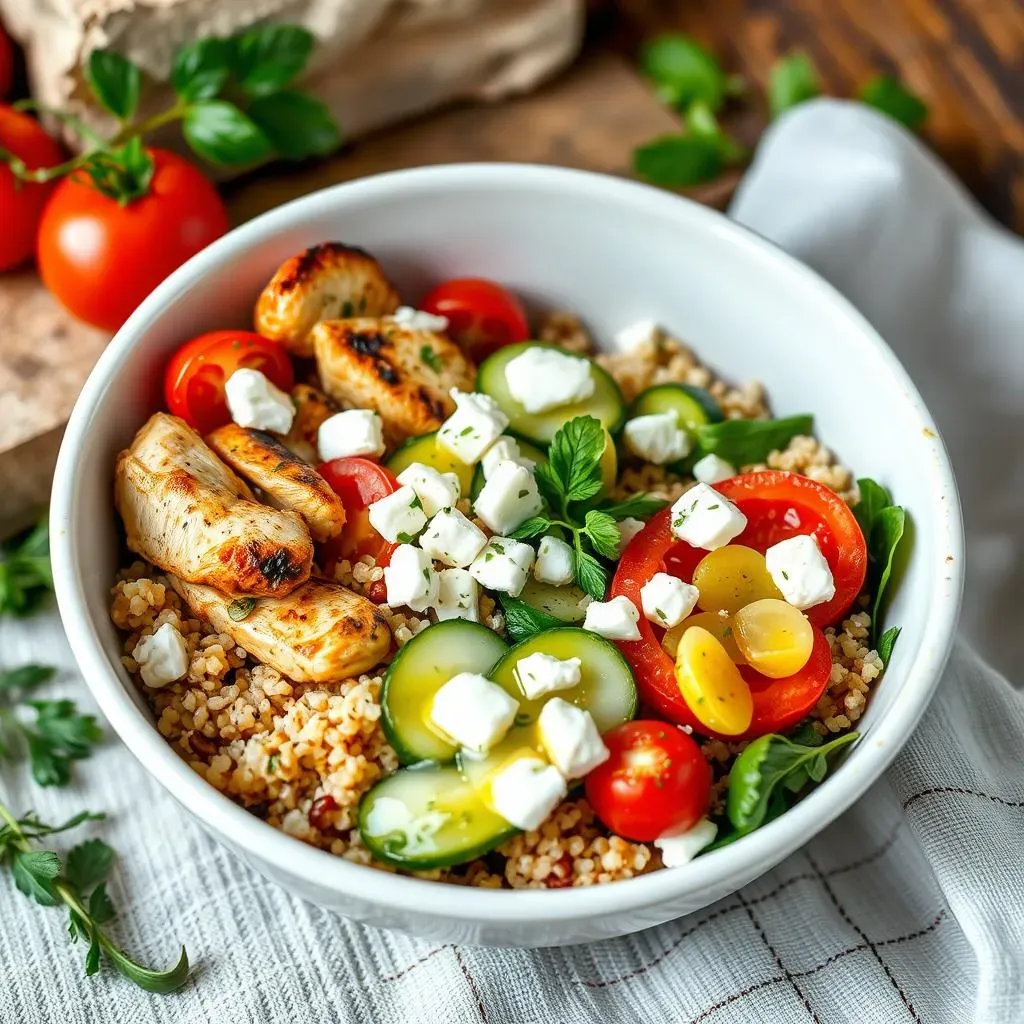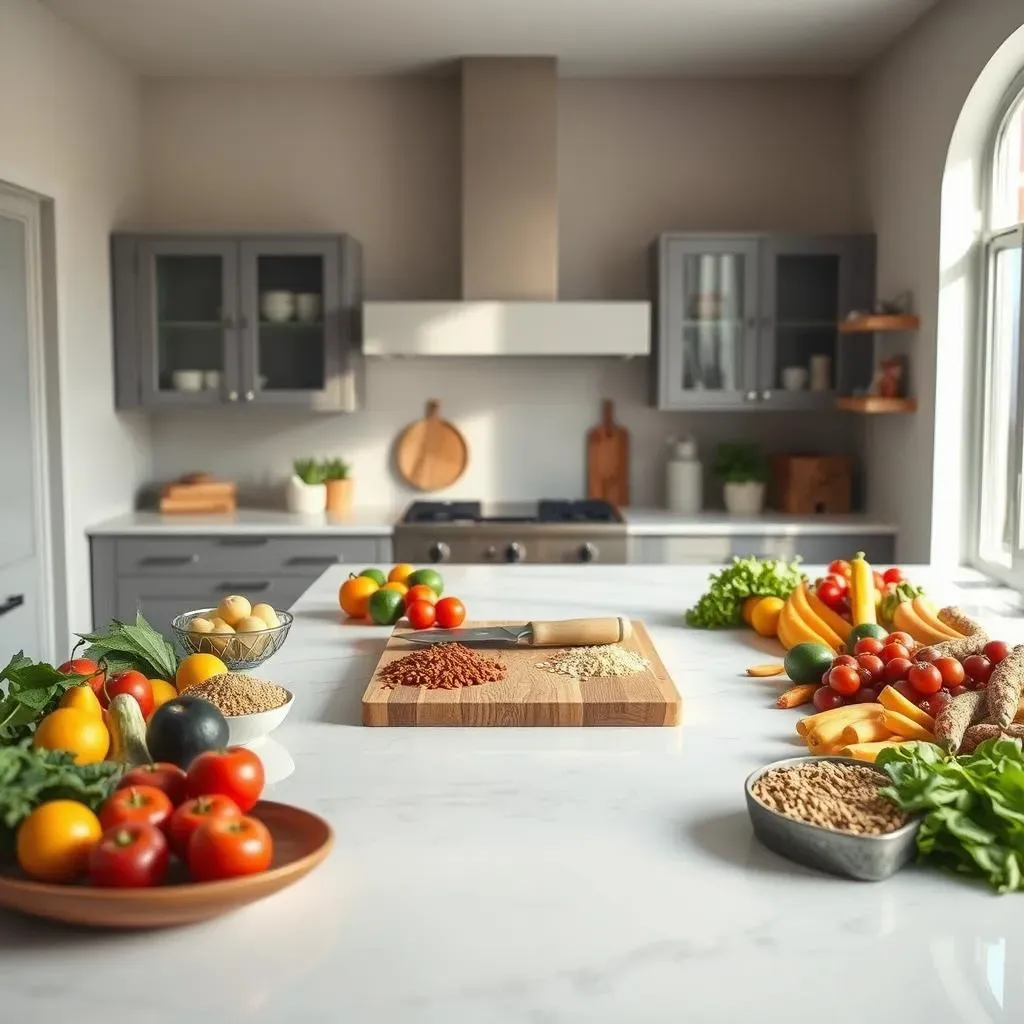Table of Contents
Ever feel like you're battling a never-ending war with your fridge? You're not alone. Many of us struggle to eat healthy, especially when trying to create a calorie deficit for weight loss. The solution? Meal prepping! It's not just for bodybuilders; it's a game-changer for anyone wanting to take control of their diet. This article is your guide to mastering meal prep, focusing specifically on creating delicious and satisfying meals that fit within a calorie deficit. We'll explore the basic principles of calorie deficits, provide practical strategies for planning and prepping your meals, and offer a variety of tasty recipe ideas that won't leave you feeling hungry or deprived. Ready to ditch the diet drama and embrace a simpler, healthier way of eating? Let's jump into the world of "meal prep ideas calorie deficit" and make this work for you!
Understanding Calorie Deficit for Weight Loss

Understanding Calorie Deficit for Weight Loss
What's a Calorie Deficit Anyway?
Okay, so you've heard the term "calorie deficit" thrown around, but what does it actually mean? Simply put, it's when you consistently eat fewer calories than your body burns each day. Think of your body like a car; it needs fuel (calories) to run. If you put in less fuel than it needs, it starts using stored energy (fat) to keep going. That's how weight loss happens. It’s not some magical formula, just basic energy balance. You need to be in a deficit to lose weight.
Now, it's not about starving yourself. It’s about being smart with what you eat. We're talking about making informed choices and finding the right balance for your body. It's about understanding that food is fuel, and you need to give your body the right kind of fuel for it to work properly, without being overfilled. You can still eat tasty meals, just in a way that helps you reach your goals. Remember, it's about creating a sustainable habit, not a temporary diet.
How Many Calories Do I Need?
Figuring out your personal calorie needs can be a bit tricky, because everyone is different. Your activity level, age, gender, and body composition all play a role. There are many online calculators that can give you a starting point. These tools estimate how many calories you burn daily just by existing—that's your Basal Metabolic Rate (BMR)—and then add in calories burned through activity. Once you know that number, you can create a calorie deficit. For a safe and sustainable weight loss, a deficit of about 250-500 calories per day is a good starting point. Don't go too low too fast, that's a recipe for feeling miserable and giving up.
It’s also worth noting that the quality of your calories matters. A 200-calorie bag of chips is not the same as a 200-calorie serving of chicken and veggies. The chicken and veggies will keep you full for longer, provide your body with nutrients, and make it easier to stick to your plan. So, focus on nutrient-dense foods. It’s like building a house; you need good materials to make it strong, not just any old stuff.
Factor | Description |
|---|---|
Basal Metabolic Rate (BMR) | Calories burned at rest. |
Activity Level | Calories burned through exercise and daily movement. |
Age, Gender, Body Composition | Individual factors affecting calorie needs. |
Finding Your Calorie Sweet Spot
Now, finding that calorie sweet spot isn't a one-size-fits-all deal. It's about experimenting and seeing what works for you. Start with those estimated numbers and track your weight and energy levels for a week or two. Are you losing weight? Great! Feeling tired all the time? Maybe you need to adjust it up a bit. It's a process of tweaking and tuning. Remember, it's not about perfection, it's about progress. This isn't a sprint, it's a marathon. Consistency is key.
Don't get too caught up in the numbers, either. Focus on making sustainable changes to your eating habits, not just hitting a calorie goal. This means choosing whole foods, drinking plenty of water, and getting enough sleep. It's about creating a healthy lifestyle that you can maintain long-term. And if you're ever feeling lost, don't be afraid to reach out to a registered dietitian or a nutritionist. They can help you create a plan that's tailored to your specific needs and goals. Remember, it's an investment in your health and well-being.
Smart Meal Prep Strategies for Calorie Control

Smart Meal Prep Strategies for Calorie Control
Planning is Your Secret Weapon
Okay, so you're ready to dive into meal prepping, but where do you even start? First things first: you need a plan. It's like going on a road trip; you wouldn't just jump in the car and drive without knowing where you're going, right? Same thing with meal prep. Start by deciding what meals you'll be prepping for—lunch, dinner, snacks, or all of the above. Then, pick a few recipes that you actually enjoy and that fit within your calorie goals. Don't try to make elaborate, gourmet meals if that's not your thing. Keep it simple, delicious, and, most importantly, something you'll actually look forward to eating. Remember, consistency is more important than complexity.
Next, take a look at your schedule. When do you have time to shop for groceries and prep your meals? Sunday afternoons are popular for meal prepping, but you can pick whatever works best for you. Maybe it's a few hours on Wednesday night. The key is to find a routine that fits into your life, not the other way around. Once you have your plan, create a grocery list based on the recipes you've chosen. This will help you avoid impulse buys and stay focused on your goals. It’s all about setting yourself up for success, one step at a time.
Step | Action |
|---|---|
1 | Decide which meals to prep. |
2 | Choose simple, enjoyable recipes. |
3 | Schedule time for shopping and prepping. |
4 | Create a detailed grocery list. |
Portion Control is Key
Alright, you've got your recipes, your groceries, and your prep time scheduled. Now, let's talk about portion control. This is where a lot of people go wrong. You can make the healthiest meal in the world, but if you eat too much of it, you're still going to struggle with your calorie deficit. Invest in some food scales and measuring cups. It might seem a bit tedious at first, but it's the only way to be sure about your calorie intake. Don't try to eyeball it; that's a recipe for overeating. Think of it like baking a cake; you wouldn't just throw in a random amount of flour and sugar, would you?
When you're portioning out your meals, use containers that are the right size for your needs. If you're always eating out of a big bowl, you're likely eating more than you need. Smaller containers can help you keep your portions under control. Also, don't be afraid to pre-portion your snacks. It’s easy to mindlessly munch on a bag of chips if you don't measure out a serving ahead of time. By taking some time to portion everything out, you're making it easier to stick to your plan. Remember, it's about making smart choices, not just depriving yourself.
Delicious & Easy Meal Prep Ideas for a Calorie Deficit

Delicious & Easy Meal Prep Ideas for a Calorie Deficit
Quick & Satisfying Lunch Bowls
Alright, let's get to the fun part: the actual food! When it comes to meal prepping for a calorie deficit, lunch bowls are your best friend. They're super versatile, easy to make, and you can pack them with all sorts of delicious and healthy ingredients. Think of them as a blank canvas for your culinary creativity. For example, a Mediterranean bowl with quinoa, grilled chicken or chickpeas, cucumber, tomatoes, feta cheese, and a lemon-herb dressing is both filling and flavorful. Or, try a southwest bowl with brown rice, black beans, corn, salsa, and a dollop of Greek yogurt. The possibilities are endless! The key is to combine lean protein, complex carbs, and plenty of veggies to keep you satisfied and energized throughout the afternoon. Don't be afraid to experiment with different flavors and textures to keep things interesting.
Another great option is a salad jar. Layer your dressing at the bottom, followed by hard veggies like carrots and cucumbers, then softer veggies, then your protein, and finally your greens. This keeps everything fresh and prevents your salad from getting soggy. When you're ready to eat, just dump it into a bowl and enjoy. These are perfect for those days when you're short on time. Remember, meal prep isn't about spending hours in the kitchen; it's about being efficient and making healthy choices that fit into your busy lifestyle. It’s about working smarter, not harder.
Bowl Type | Key Ingredients | Flavor Profile |
|---|---|---|
Mediterranean | Quinoa, Chicken/Chickpeas, Cucumber, Tomato, Feta, Lemon-Herb Dressing | Fresh, Light, Savory |
Southwest | Brown Rice, Black Beans, Corn, Salsa, Greek Yogurt | Hearty, Spicy, Tangy |
Salad Jar | Dressing, Hard Veggies, Soft Veggies, Protein, Greens | Fresh, Customizable, Convenient |
Simple & Flavorful Dinner Options
Dinner meal prep doesn't have to be complicated either. One of my go-to's is sheet pan meals. Toss your favorite veggies with some lean protein, like chicken breast or tofu, add some spices, and bake it all on one pan. It's minimal cleanup and maximum flavor. Roasted sweet potatoes, broccoli, and bell peppers with chicken is a winner every time. Or, try salmon with asparagus and lemon. The beauty of sheet pan meals is that you can customize them with whatever you have on hand. It's all about convenience and not spending hours washing dishes. These are the kind of meals that make your life easier, not harder.
Another excellent choice is a batch of soup or chili. These are perfect for colder days and can be easily portioned out for the week. Lentil soup, chicken and veggie soup, or a hearty chili are all great options. They’re packed with nutrients and can be easily stored in the fridge or freezer. You can also get creative with your spices to keep them from getting boring. Think of meal prepping as an opportunity to try new flavors and combinations. It’s about making healthy eating exciting, not a chore. Remember, food should be something that you enjoy, even when you're working towards a calorie deficit.
Staying on Track: Tips for LongTerm Meal Prep Success

Staying on Track: Tips for LongTerm Meal Prep Success
Embrace Variety to Avoid Meal Prep Burnout
Okay, let's be real, eating the same thing day in and day out can get boring fast. It's like listening to the same song on repeat; eventually, you're going to want to switch it up. The same applies to your meal prep. Don't get stuck in a rut with the same three recipes. Explore new flavors and ingredients. Try a new cuisine each week, or experiment with different spices and herbs. It's all about keeping your taste buds excited and your meals interesting. Think of your meal prep as a culinary adventure, not a chore. The more you enjoy your meals, the more likely you are to stick to your plan long-term.
Another great way to add variety is to swap out ingredients. If you're tired of chicken, try fish or tofu. If you're bored with brown rice, try quinoa or couscous. Small changes can make a big difference in how you perceive your meals. Also, don't be afraid to use leftovers in creative ways. Leftover roasted chicken can be added to a salad or a soup. Leftover veggies can be used in an omelet. It's all about being resourceful and getting the most out of your meal prep. Remember, variety is the spice of life, and it's also the key to long-term meal prep success.
Plan for Flexibility and Imperfection
Life happens, and sometimes your meal prep plans will go out the window. That's okay! Don't beat yourself up about it. The key is to be flexible and have a backup plan. Maybe you have a busy week and don't have time to prep. Keep some healthy frozen meals or canned goods on hand for those emergencies. Or, if you have to eat out, make the best choices you can. Look for restaurants that offer healthy options and try to choose meals that align with your goals. Remember, it's not about perfection, it's about making progress and creating sustainable habits. It's a marathon, not a sprint, and there will be bumps along the way.
Also, don't be afraid to adjust your meal prep plan as you go. If you find that a certain recipe doesn't work for you, or you're not enjoying it, don't force it. Try something new. The goal is to make meal prep something that fits into your life and supports your goals, not the other way around. It's about creating a system that works for you, not forcing yourself into a system that doesn't. Remember, it's okay to make mistakes, as long as you learn from them and keep moving forward. Flexibility is key to long-term success.
Strategy | Description |
|---|---|
Embrace Variety | Explore new recipes, cuisines, and ingredients to avoid boredom. |
Swap Ingredients | Change proteins, carbs, and veggies to add variety. |
Utilize Leftovers | Get creative with leftovers to create new meals. |
Plan for Flexibility | Have backup meals for busy times and emergencies. |
Adjust Your Plan | Don't be afraid to change recipes or strategies that aren't working. |
Wrapping Up Your Calorie Deficit Meal Prep Journey
So, there you have it: a roadmap to successful meal prepping while aiming for a calorie deficit. It's not about deprivation; it’s about making smart choices and planning ahead. Remember, consistency is key, and don’t be afraid to experiment with different recipes and flavors to keep things interesting. Meal prepping might seem like a chore at first, but with a little practice, it can become a powerful tool in your journey toward a healthier lifestyle. Now, go forth, conquer those cravings, and enjoy the deliciousness of your prepped meals! You got this!